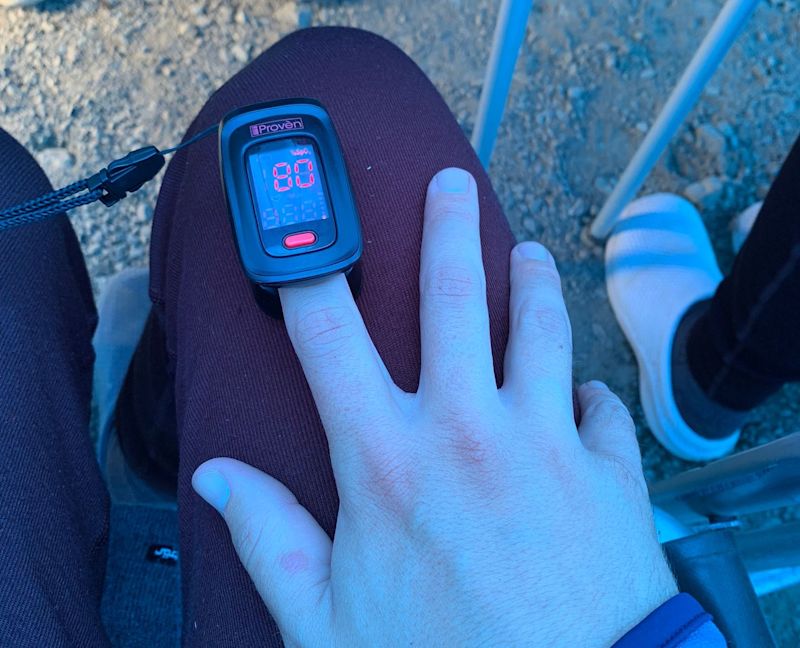High-altitude trekking is an exhilarating experience. It offers breathtaking views and a sense of accomplishment.
However, it also presents unique challenges. One of these is acute mountain sickness (AMS).
AMS is a condition that can affect anyone ascending to high altitudes. It's a result of the body's response to decreased atmospheric pressure and lower oxygen levels.
Understanding the pathophysiology of AMS is crucial for anyone planning a high-altitude adventure. It helps in preparing for the journey and managing the risks involved.
This article aims to provide a comprehensive understanding of AMS. It will delve into its underlying mechanisms, symptoms, risk factors, and management strategies.
Understanding acute mountain sickness (AMS)
Acute mountain sickness (AMS) is a common condition among high-altitude adventurers. It occurs when individuals ascend too quickly without proper acclimatisation. Approximately 25% of people visiting high altitudes experience AMS.
Altitude sickness encompasses a spectrum of illnesses. These include AMS, High Altitude Pulmonary Edema (HAPE), and High Altitude Cerebral Edema (HACE). While AMS is the mildest form, it can progress to more severe conditions.
Symptoms of AMS can vary widely. They often begin with headaches, dizziness, and fatigue. As the condition worsens, individuals may experience nausea, vomiting, and difficulty sleeping.
In more severe cases, symptoms include ataxia and altered mental status. Recognising and responding to these signs is crucial. Early identification can prevent complications and ensure safety.
To summarise, awareness of AMS symptoms is vital for high-altitude trekkers. Understanding its prevalence and recognising its signs can help manage risks effectively. Here's a short list of key symptoms to watch for:
- Headache
- Dizziness
- Nausea and vomiting
- Fatigue
- Sleep disturbance
This foundational knowledge is essential for anyone considering an adventure at high altitudes. It prepares them to address and mitigate altitude-related health issues effectively.
The science behind AMS: altitude sickness physiology
The pathophysiology of acute mountain sickness is primarily linked to hypobaric hypoxia. At high altitudes, atmospheric pressure decreases, leading to lower oxygen availability. The reduced oxygen supply affects the body's ability to function optimally.
When the body encounters low oxygen levels, several physiological responses occur. One critical response is an increase in breathing rate, termed hyperventilation. This helps supply more oxygen to the blood but can also result in respiratory alkalosis.
Cerebral blood flow also changes in response to hypoxia. The brain demands more oxygen, leading to increased blood flow. This can cause symptoms such as headache and impaired cognitive function due to vascular dilation.
Acclimatisation plays a crucial role in mitigating the effects of hypoxia. Gradual ascent allows the body to adapt to lower oxygen levels. Red blood cell production increases, enhancing the oxygen-carrying capacity of the blood.
Despite acclimatisation, the body must still manage fluid balance. Increased capillary pressure can result in fluid leakage into the brain, contributing to AMS symptoms. This highlights the importance of a slow, steady ascent.
Key physiological effects of altitude on the body include:
- Hyperventilation
- Increased cerebral blood flow
- Enhanced red blood cell production
- Fluid balance disruption
Understanding these physiological mechanisms underscores the importance of acclimatisation. Slow ascent rates and resting periods are essential strategies. They help the body adapt gradually and reduce the likelihood of AMS.
These insights into the physiology of altitude sickness are invaluable. They guide preparation strategies and inform responses to the condition. Trekkers can embark on high-altitude adventures with greater confidence and safety.
Risk factors and diagnosis of AMS
A pulse oximeter in use
Several factors can increase the risk of developing acute mountain sickness. Rapid ascent is one of the most significant contributors. Ascending too quickly does not give the body enough time to acclimatise to reduced oxygen levels.
High altitude itself poses a risk, especially above 8,000 feet (approximately 2,500 meters). Exertion at these altitudes can exacerbate symptoms. Additionally, individual susceptibility varies, with some people more prone to AMS than others.
Understanding these risk factors is crucial for prevention. It allows trekkers to take precautionary measures. Early recognition of symptoms can lead to timely interventions, reducing the risk of progression.
To aid in diagnosing AMS, the Lake Louise Scoring System is often utilised. This tool assesses symptoms like headache, nausea, and fatigue. It provides a structured way to evaluate the severity of AMS and guide treatment decisions.
Using such diagnostic tools ensures accurate assessment. It empowers trekkers and guides to make informed decisions about continuing an ascent or seeking treatment. This structured approach is essential for safety at high altitudes.
Preventative measures and acclimatisation strategies
Acclimatisation days after big altitude jumps are important
Preventing acute mountain sickness is largely about proper acclimatisation. Gradual ascent is the key to allowing your body to adjust to lower oxygen levels. The recommended ascent rate is no more than 1,000 to 1,500 feet (approximately 300 to 450 meters) per day once above 8,000 feet (2,500 meters).
Having rest days during your trek is equally vital. These days offer your body a chance to adapt. It is important to listen to your body and adjust plans if symptoms start to appear.
Pharmacological prophylaxis can also play a role in preventing AMS. Medications like acetazolamide are used to aid acclimatisation. This medication can help by inducing changes in the body that mimic acclimatisation responses, such as increased breathing rate.
Using such medications should be considered based on individual needs and after consulting a healthcare provider. Combining pharmacological approaches with proper ascent plans enhances safety. It gives trekkers an extra layer of protection against AMS.
Treatment and management of AMS
If acute mountain sickness symptoms appear, swift action is crucial. The simplest and most effective treatment is to descend to a lower altitude. Descending even a few hundred meters can significantly alleviate symptoms.
Supplemental oxygen can also be beneficial. It provides immediate relief by raising blood oxygen levels temporarily. Ensure a steady oxygen supply if symptoms are severe.
Medications are another treatment avenue for AMS. Dexamethasone is often used to reduce brain swelling. It can help manage severe symptoms like confusion and ataxia.
Here are some key steps in managing AMS:
- Descent: Priority action to reduce altitude.
- Oxygen: Supplemental oxygen for symptom relief.
- Hydration: Ensure adequate fluid intake.
- Rest: Avoid further ascent until symptoms resolve.
- Medications: Use under guidance, such as dexamethasone.
Monitoring symptoms is important during recovery. If there's no improvement, or symptoms worsen, further medical assistance may be needed.
Long-term effects and the importance of preparation
Extended exposure to high altitudes can have long-term impacts on the body. Some individuals may experience changes in cognitive function or pulmonary health. The effects can be subtle but might affect daily life.
Preparation is key to minimising these risks. Prior acclimatisation and gradual exposure to altitude are vital. Planning a trek should include detailed checks on fitness and health conditions.
Informed decision-making can enhance safety and enjoyment. Thorough planning encompasses not just logistics, but also health evaluations and training. Taking these steps helps ensure an adventurous journey remains both safe and rewarding.
The role of education and awareness
Understanding acute mountain sickness pathophysiology is crucial for safe high-altitude adventures. Knowledge empowers trekkers to recognise, prevent, and manage AMS effectively.
Education plays a vital role in reducing risks. Continuous learning and awareness are essential for both seasoned adventurers and newcomers to high-altitude trekking.





